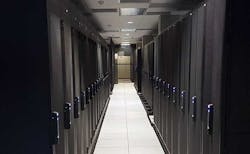Act Now to Protect Your Data Center From Rising Seasonal Temperatures
The heat waves caused fatalities and other social impacts – and caused data center outages in the UK as temperatures reached 104 degrees Fahrenheit (40 degrees Celsius). In addition, the heat waves led to reduced power production in France and concerns over water usage in drought-stricken areas of the U.S., both of which can impact data centers. Experts say that Europe is especially vulnerable to heat waves in the years ahead.
Planning ahead for rising temperatures
As data center operators prepare for a hotter future, it’s important to look to regions with experience in dealing with extreme heat, as well as taking advantage of newer technologies.
Based on our global experience, we recommend that you:
- Evaluate heat rejection rooftop space planning and design data center infrastructures to withstand higher heat loads and higher ambient temperatures, considering CFD analysis of proper air distribution to optimize placement of equipment on the roof.
- Consider alternatives to conventional cooling systems, including water-free cooling and evaporative free-cooling systems. These options are designed to deliver reliability and efficiency in high temperatures.
- Design data hall for higher operating temperatures to reduce the difference to the outdoor ambient for best capacity planning.
- Regularly audit your data center cooling system for proper operation, and to ensure that it continues to meet design capacity needs.
Near-term action plan
Given projections, rising temperatures will likely be back sooner rather than later. Here are two actions you can take during high-heat conditions to protect your data center equipment:
Run as many units as possible. As temperatures rise, it’s essential to keep refrigerant pressures as low as possible so there is not a risk of trips on high pressure. You can do this by running as many cooling units as possible, depending on the data hall load, to minimize the load on each individual unit. Typically, an organization would run all redundant units. If the IT load is not 100%, run enough units to get the per-cooling unit evenly distributed. This practice also provides a more efficient operating point.
Schedule preventive maintenance. If you do not already have a plan in place, now is the time to call your service provider to create one. If you already have a maintenance plan in place, review it with your service provider to ensure it is ready when temperatures rise. Two keys to success:
- Clean condenser coils. The lack of proper, regular cleaning of the condenser coil can cause more of a reduction in the overall thermal unit capacity than the ambient temperature itself. Clean coils more frequently during pollen, dust and cottonwood seasons as well as prior to high-temperature months. Compressor-based (DX) units typically require quarterly or more frequent cleaning of the condenser coils.
- Check the Refrigerant Charge Levels. If the levels are too low or out of range, the system will not deliver on the design capacity and compressors may overheat. Proper maintenance helps ensure the system operates efficiently.
By adopting these short-term and long-term strategies, you can improve the reliability and performance of your IT infrastructure today and into the future as we face the continuing impacts of rising temperatures.
Steve Madara, Global Vice President of Thermal Management at Vertiv where he’s a charter member of the “Gang of Cool,” a team of Vertiv thermal management experts committed to sharing their expertise with the industry to improve the efficiency and reliability of data center and edge cooling. Contact Vertiv to learn more.



